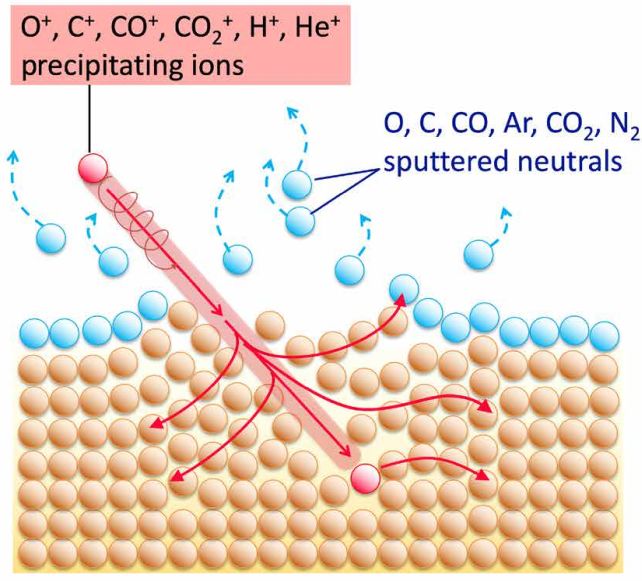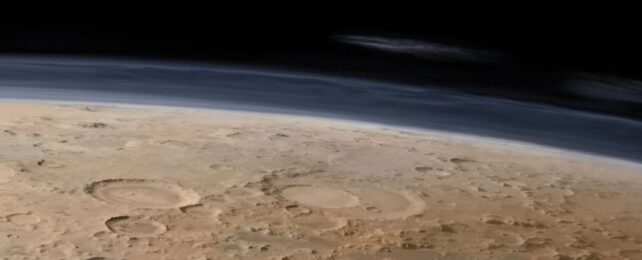For the first time, scientists have caught a key driver of the ongoing erosion of the atmosphere of Mars in action.
It took more than nine years' worth of satellite data, but a team led by planetary scientist Shannon Curry of the University of Colorado Boulder has finally detected unmistakable signs of atmospheric sputtering.
This is, the researchers say, a crucial piece of the puzzle of how Mars lost both its atmosphere and its water.
"These results provide a substantial step toward observationally establishing sputtering's role in the loss of Mars' atmosphere," the team writes in their paper, "and, hence, in determining the history of water and those implications for habitability over time."
Atmospheric sputtering is thought to be one of the dominant mechanisms for atmospheric loss in the early Solar System, when the Sun was brighter and more active. It happens when ions are accelerated by the electric field of the Solar wind into the atmosphere of a body – like Mars – that is unprotected by a global magnetic field.

The effect is a little bit like when a meteorite smacks into a planet: energy is transferred to the surrounding neutral medium, kicking it up in a spray. But for sputtering, some of the atmospheric atoms and molecules gain enough energy to achieve escape velocity, and off they go, flung into space on a new adventure.
It's difficult to observe this process on Mars. It requires simultaneous observation of the flung neutral atoms, and either the ions that smacked into the atmosphere, or the electric field that accelerated them. It also requires simultaneous dayside and nightside observations of Mars, deep into its atmosphere.
The only spacecraft with the equipment and orbital configuration to make these observations is NASA's MAVEN. The researchers carefully pored over the data collected by the spacecraft since it arrived in Mars orbit in September 2014, looking to find simultaneous observations of the solar electric field and an upper atmosphere abundance of argon – one of the sputtered particles, used as a tracer for the phenomenon.
This is a photo of the surface of Mars taken by the Viking 1 orbiter in 1976.
It looks like something out of a sci-fi film you'd see today.
(And yes, that *is* a smiley face in that crater…)
Credit: NASA/JPL-Caltech, processing by Andrea Luck (@andrealuck.bsky.social)
— Paul Byrne (@theplanetaryguy.bsky.social) March 17, 2025 at 1:21 PM
They found that, above an altitude of 350 kilometers (217 miles), argon densities vary depending on the orientation of the solar wind electric field, compared to argon densities at lower altitudes that remain consistent.
The results showed that lighter isotopes of argon vary, leaving behind an excess of heavy argon – a discrepancy that is best explained by active sputtering. This is supported by observations of a solar storm, the outflows of which arrived at Mars in January 2016. During this time, the evidence of sputtering became significantly more pronounced.
Not only does this support the team's finding that argon density variations at high Martian altitudes are the result of sputtering, it demonstrates what conditions may have been like billions of years ago, when the Sun was younger and rowdier, undergoing more frequent storm activity.
"We find that atmospheric sputtering today is over four times higher than previous predictions and that a solar storm can substantially increase the sputtered yield," the researchers write.
"Our results confirm that sputtering is occurring on present-day Mars and could have been the main pathway for atmospheric escape at Mars during the early epochs of our Solar System when the solar activity and extreme ultraviolet intensities were much higher."
The results have been published in Science Advances.
